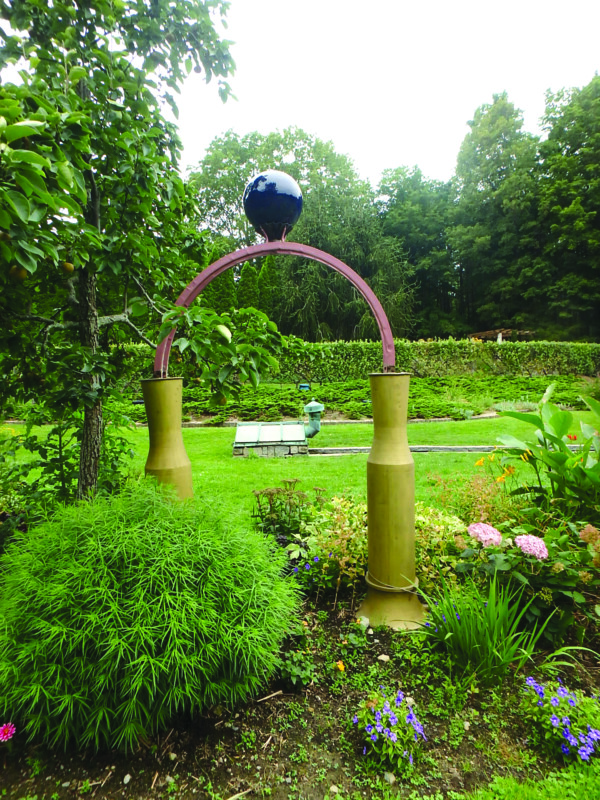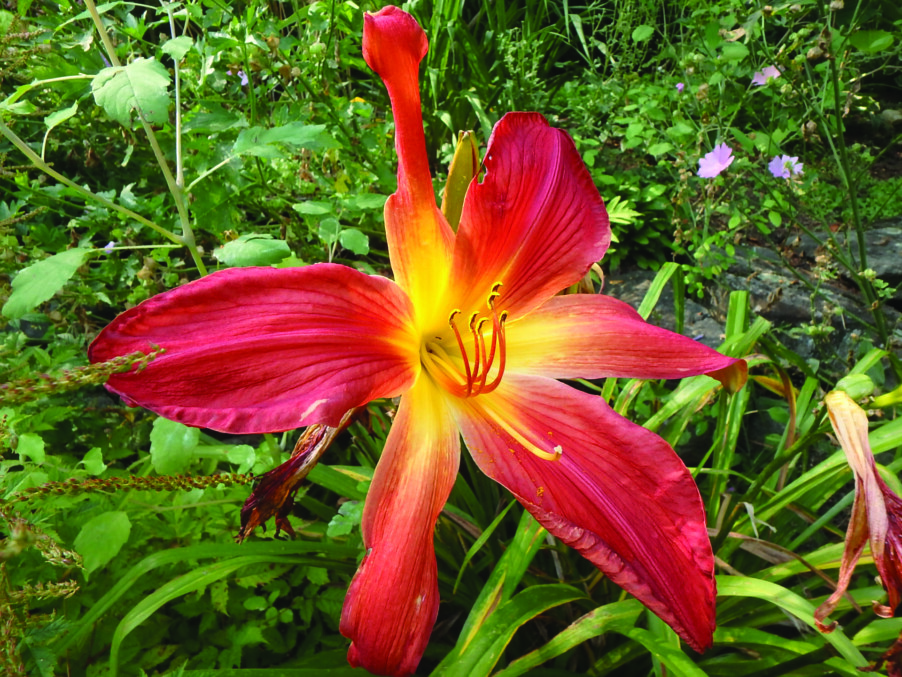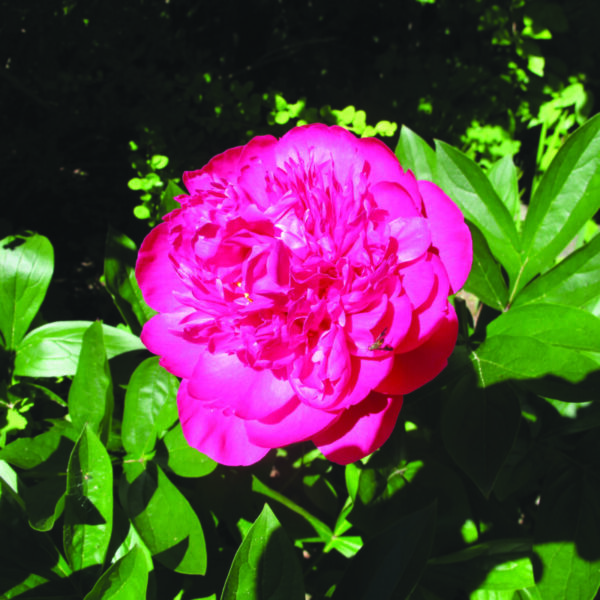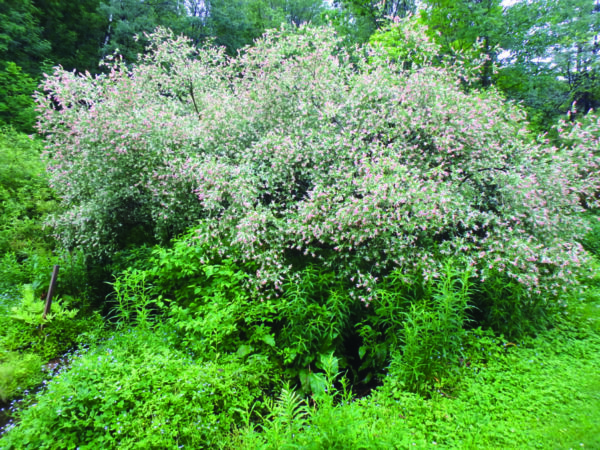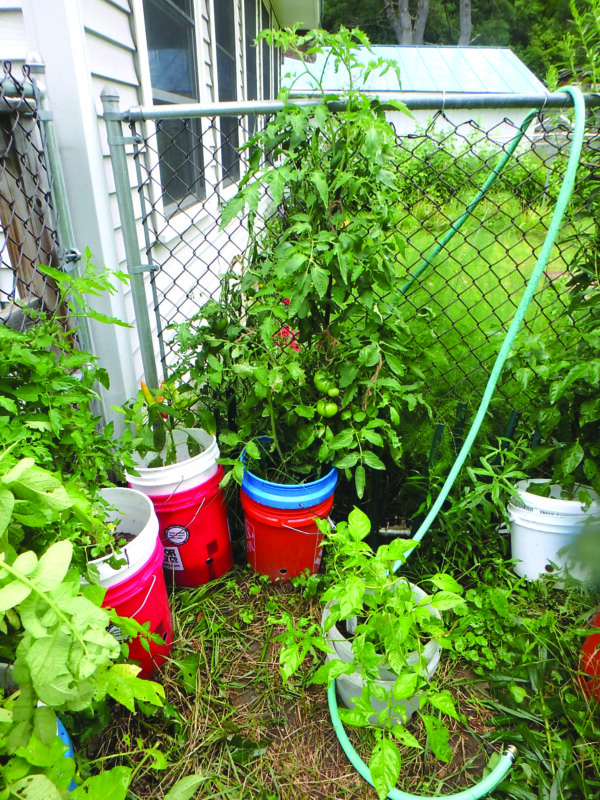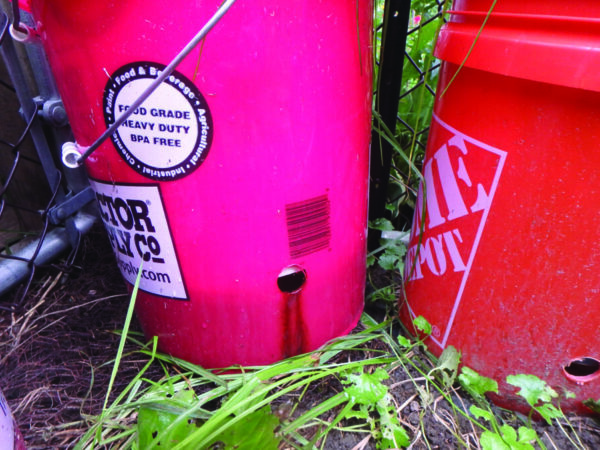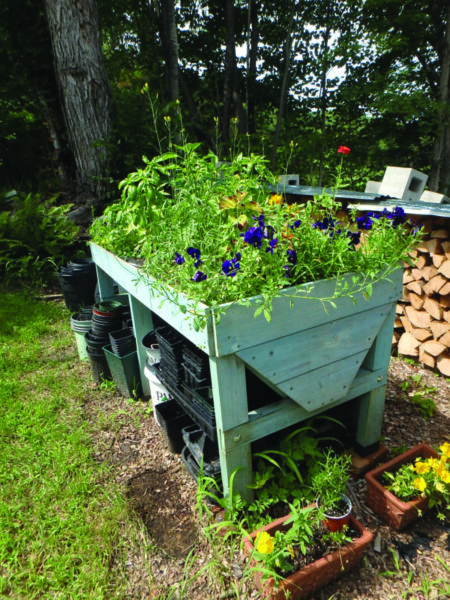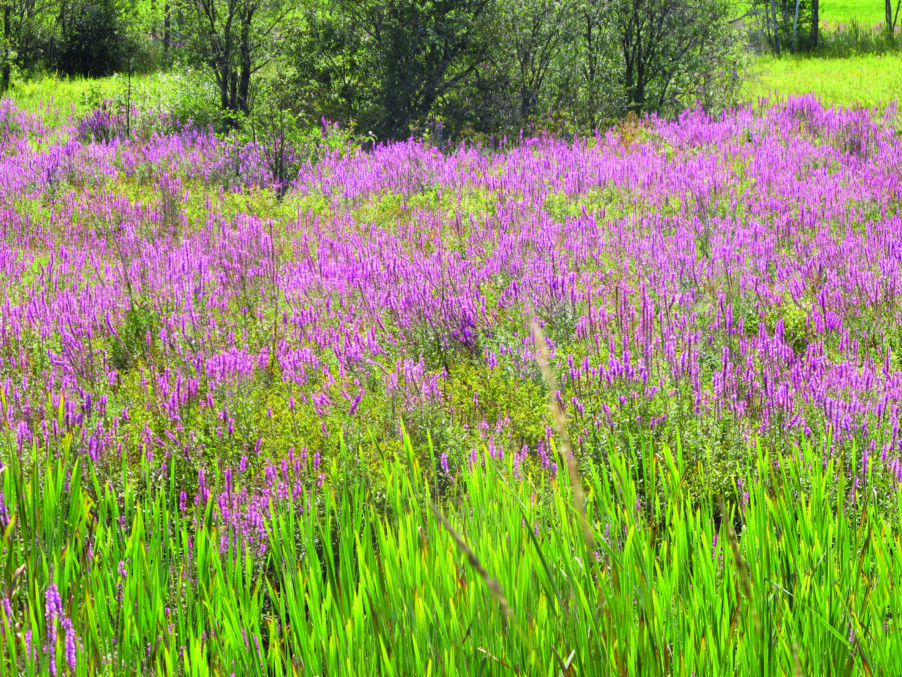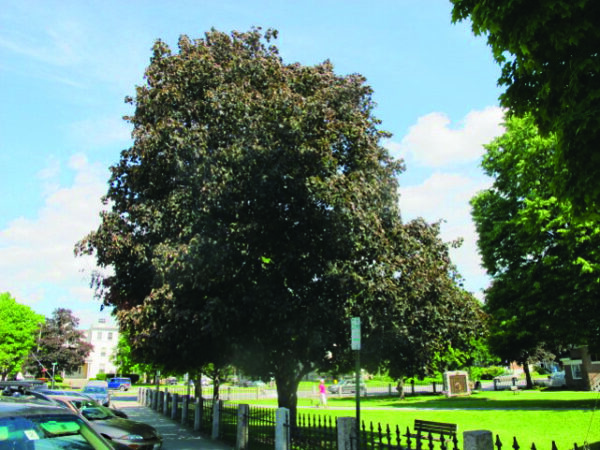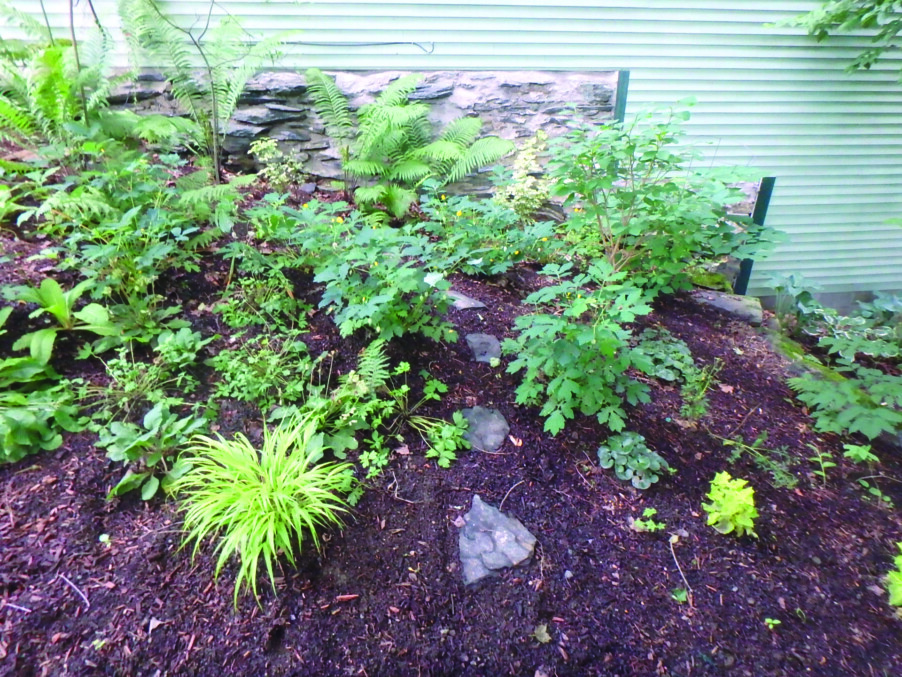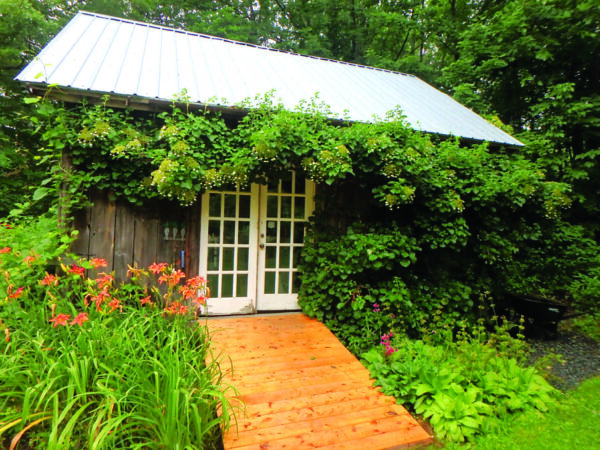Delightful surprises at public garden
I recently visited Bedrock Garden in Lee and came away feeling refreshed and enlightened. This 37-acre public garden was created on the premises of a 1700s farm that was purchased in 1980 by artist and garden designer Jill Nooney and her husband, Bob Munger.
Jill Nooney is a talented designer, who has won many awards at the Boston Flower Show. She is a welder who uses her skills to create metal sculptures from small to mammoth, as well as working with other media. Bob is a natural builder and fix-it guy who has enabled Jill to install her art in the landscape, along with water features, walls, paths and much more. They are a couple who really bring out the best in each other.
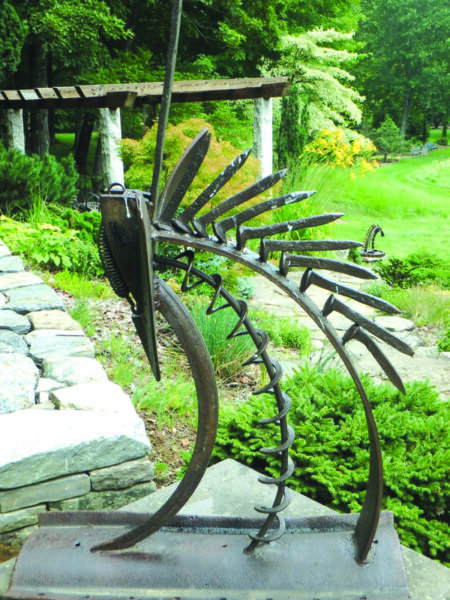
When I toured the gardens I was lucky to have Jill as one of my guides. Also touring the gardens with me was John Forti, Executive Director and Horticulturist of the nonprofit that manages the gardens. We spent nearly three hours together looking at the gardens and I learned about many plants I had never seen before.
Bedrock Garden is full of surprises that delight, enlighten and inspire visitors. I came away wishing I had a bigger garden space for my own efforts, and with an appreciation for how much Jill and Bob have packed into their gardens.
For years Bedrock Garden was open a few weekends each summer, but five years ago Jill and Bob decided that since they were approaching what some call “retirement age” they needed to look seriously at the future of the gardens. They created a nonprofit, hired John Forti as the director, and figured out how to separate the public and private spaces.
During the pandemic they created a parking lot and visitors center that are accessed away from their home, the old farm house they have lived in for over 40 years. They have created a space that is family-friendly that delights children as much as their parents.
Near the parking lot is a gnome house kids can enter made from a huge hollow sycamore log that Jill capped with a steel roof reminiscent of a mushroom cap. She saw the wonderful hollow log alongside the road and hit her brakes immediately to ask for it. Luckily, she was the first to ask, and got it. (Five others stopped and asked for it that day, she told me, but she was the first).
I consider myself well-exposed to the palette of plants available to gardeners in New Hampshire. Bedrock Garden is in Zone 5b, meaning that most years it does not get colder than minus 25 degrees. But Jill has installed and grown many plants that I have never seen before, including many woody plants normally found in Japan or China.
Jill Nooney has used plants in ways that surprised me. For example, she used Bulls Blood heritage beets in a flower bed for their deep purple leaves. An annual effort, but very striking. When a hollow tree was cut down, she had Bob cut it in two-foot sections and stack the sections between two trees so viewers walking by could see through it like binoculars. One can see where branches had been swallowed by its growth. They call it “Log Jam.”
Jill has used decorative grasses well throughout the garden. Fountain grass is a genus of grass that gets to be more than 6 feet tall and very bushy in full sun, where she grows it in an “allee” arrangement that is gorgeous. But she also uses it in shade. “It’s wispy in the shade,” she said. “I like that.”
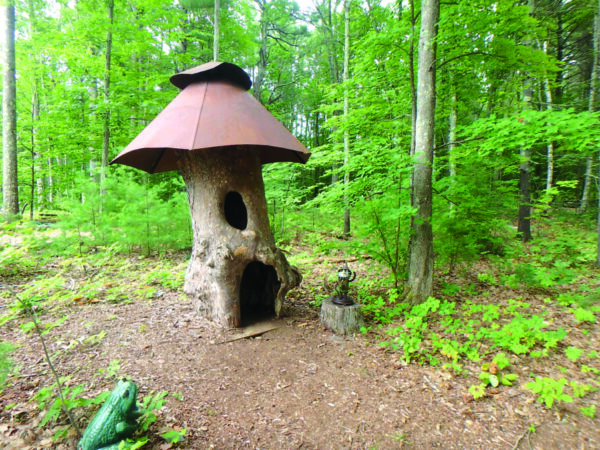
Metal sculpture is a key element throughout the garden. Early in our tour I admired a space made by forming ¾-inch steel rebar into a series of 11 arches 13 feet tall and spaced 7 feet apart. “I’m using the sky,” she said. She consciously mimicked the lines of a Gothic cathedral, bending each steel frame to a gracefully pointed Gothic arch. And she is growing European fastigiate beeches to clothe the metal frame as part of the installation: one on each side of the archways and tied to the steel. They will eventually reach the sky, the apex of the arch.
Also in the garden are two iron “Chiwaras” modeled after antelope masks made by the Bambara people of Mali. Many years ago I had told Jill the legend of the antelope in Mali, where I had worked with the Peace Corps. The Bambara people credit the antelope for teaching them to plant millet, their primary grain. The antelope pawed the ground, and dropped a little manure into the soil containing seeds. So they honored the antelope with their stylized masks, which Jill captured beautifully.
So plan a visit to Bedrock Garden if you can. There is a guided tour each day, and two on weekend days. Or just wander around and study the design elements. See how Jill has used plants that awe and inspire, and how she has added whimsy and art that delights and amuses. This is a garden worth visiting even if you don’t have a big space or the energy to develop it the way Jill and Bob have. Bring a lunch and plan on spending the day. You’ll be glad you did. And if you have children in your life, think about attending the Fairy Hobbit House Festival Oct. 9 to Oct. 11. Learn more at bedrockgardens.org.
Featured photo: Gardens and sculpture go well together. Courtesy photo.

